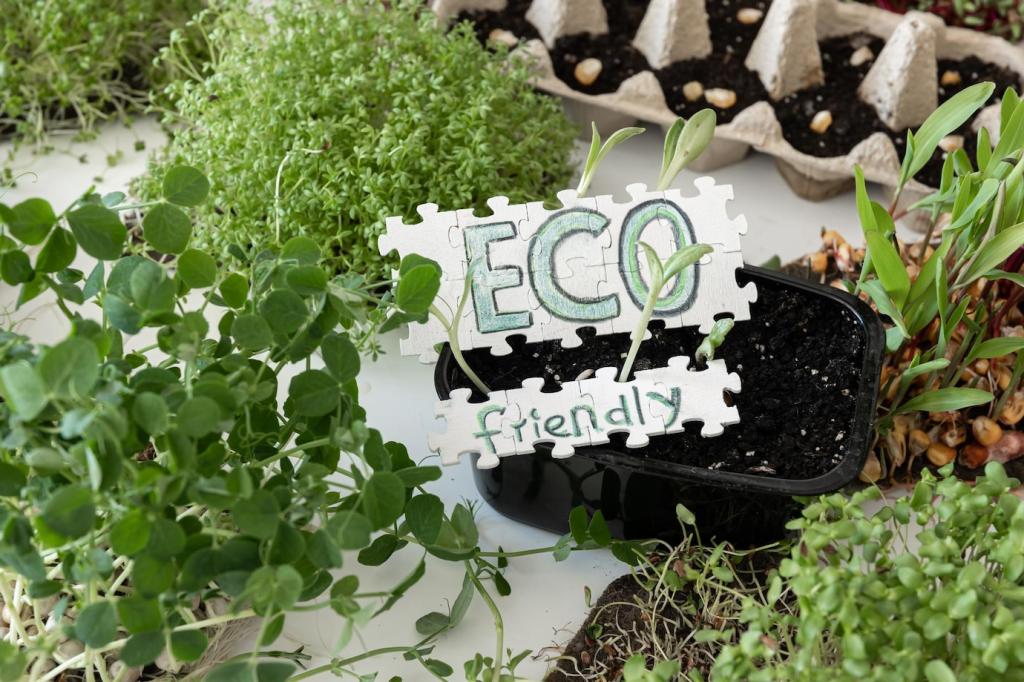Chosen theme: Eco-Conscious Care for Bamboo and Rattan Furniture. Welcome to a kinder way to care for natural fiber furniture—thoughtful methods, low-impact materials, and everyday habits that protect plant-based pieces while honoring the planet. Share your own routines and subscribe for monthly eco-care inspiration.
Know Your Fibers: Bamboo and Rattan, Sustainably
Bamboo is a fast-growing grass with nodes and silica; rattan is a flexible climbing palm with a solid core. Their different densities affect cleaning direction, drying time, and how gently joints and bindings should be handled.
Know Your Fibers: Bamboo and Rattan, Sustainably
Look for certifications like FSC or PEFC, ask about finishes, and favor small workshops that steam-cure and air-dry. Responsible sourcing reduces chemical residues, making gentle, low-tox maintenance easier. Tell us which labels you trust and why.
Know Your Fibers: Bamboo and Rattan, Sustainably
Before deep cleaning, let new or secondhand pieces acclimate for 48–72 hours in moderate humidity. Fibers relax, minimizing cracking or loosened wraps. Share a photo of your latest find and how it settled in.
Low-Waste Cleaning Rituals

Start dry to avoid driving grime deeper. Sweep with a soft brush following the weave, then use a vacuum’s brush attachment. Weekly dusting preserves patina. I once overwet a cane seat; it sagged until carefully dried.
Balance Moisture and Light
Use a hygrometer and aim for 40–60 percent. In dry seasons, cluster plants nearby or set a small water bowl under the piece. Elevate feet with felt pads, and avoid direct heater or AC blasts that desiccate fibers.
Balance Moisture and Light
Diffuse light with sheer curtains or move pieces back from windows. Rotate monthly to equalize exposure and prevent two-tone fading. I saved a bamboo console’s sun stripe by shifting it weekly until tones gently blended again.




Natural Finishes and Non-Toxic Protection
Blend two parts grated beeswax with five parts food-grade walnut oil and one part citrus solvent. Warm gently, cool to a salve, then apply sparingly with fingertips. Buff after twenty minutes. My grandmother’s rattan rocker glows with this routine.
Natural Finishes and Non-Toxic Protection
Raw linseed oil cures slowly but predictably; avoid hardware-store ‘boiled’ versions that contain metal dryers. Prefer polymerized linseed or pure tung oil. Wipe thinly, avoid pooling at bamboo nodes or rattan joints, and remove every trace of excess.
Reweaving a Cane Seat, Step by Step
Soak pre-woven cane twenty to thirty minutes, then weave over-under with gentle tension, pegging holes as you progress. Let dry overnight before trimming. Finish with a shellac-free sealer. Our neighborhood workshop revived four café chairs exactly this way.
Binding Splits with Natural Fibers
Rebind splits using raffia, jute, or cotton tape. Pre-warm fibers with a little steam, then secure with hide glue or rice paste. Use bicycle inner-tube strips as clamps. Stain with strong tea to blend repairs invisibly.
Creative Upcycles for Tired Frames
Turn a cracked rattan frame into a floating wall shelf, or a bamboo ladder into a towel rack. Refresh surfaces with milk paint or coffee dye. Save hardware in labeled jars and swap parts with neighbors before buying replacements.

Storage, Transport, and End-of-Life
Store on raised pallets with breathable cotton covers, never plastic wrap. Keep spaces ventilated and shaded, adding silica gel nearby, not directly on fibers. Check monthly for dust, pests, or shifts. Subscribe for seasonal reminders and eco-minded checklists.

